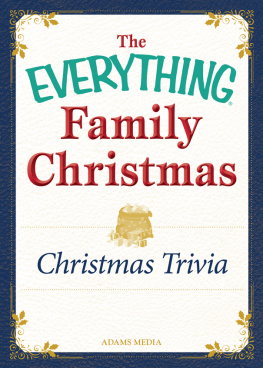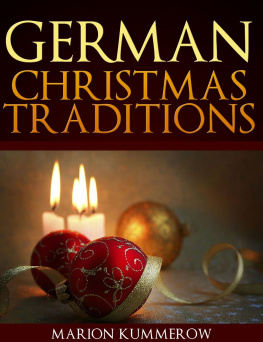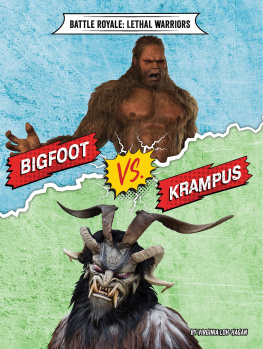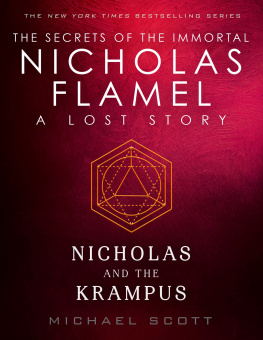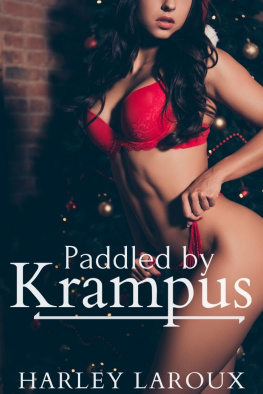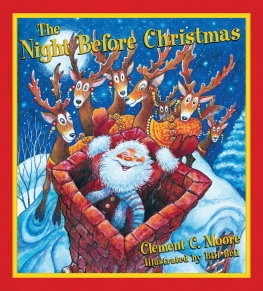The Krampus and the Old, Dark Christmas:
Roots and Rebirth of the Folkloric Devil
by Al Ridenour
2016 Al Ridenour
ISBN 9781627310413
Feral House
1240 W. Sims Way Suite 124
Port Townsend, WA 98368
www.FeralHouse.com
Design by Sean Tejaratchi
Bibliography and other supplemental material:
http://krampuslosangeles.com/book/

TABLE OF CONTENTS
Guide
TABLE OF CONTENTS
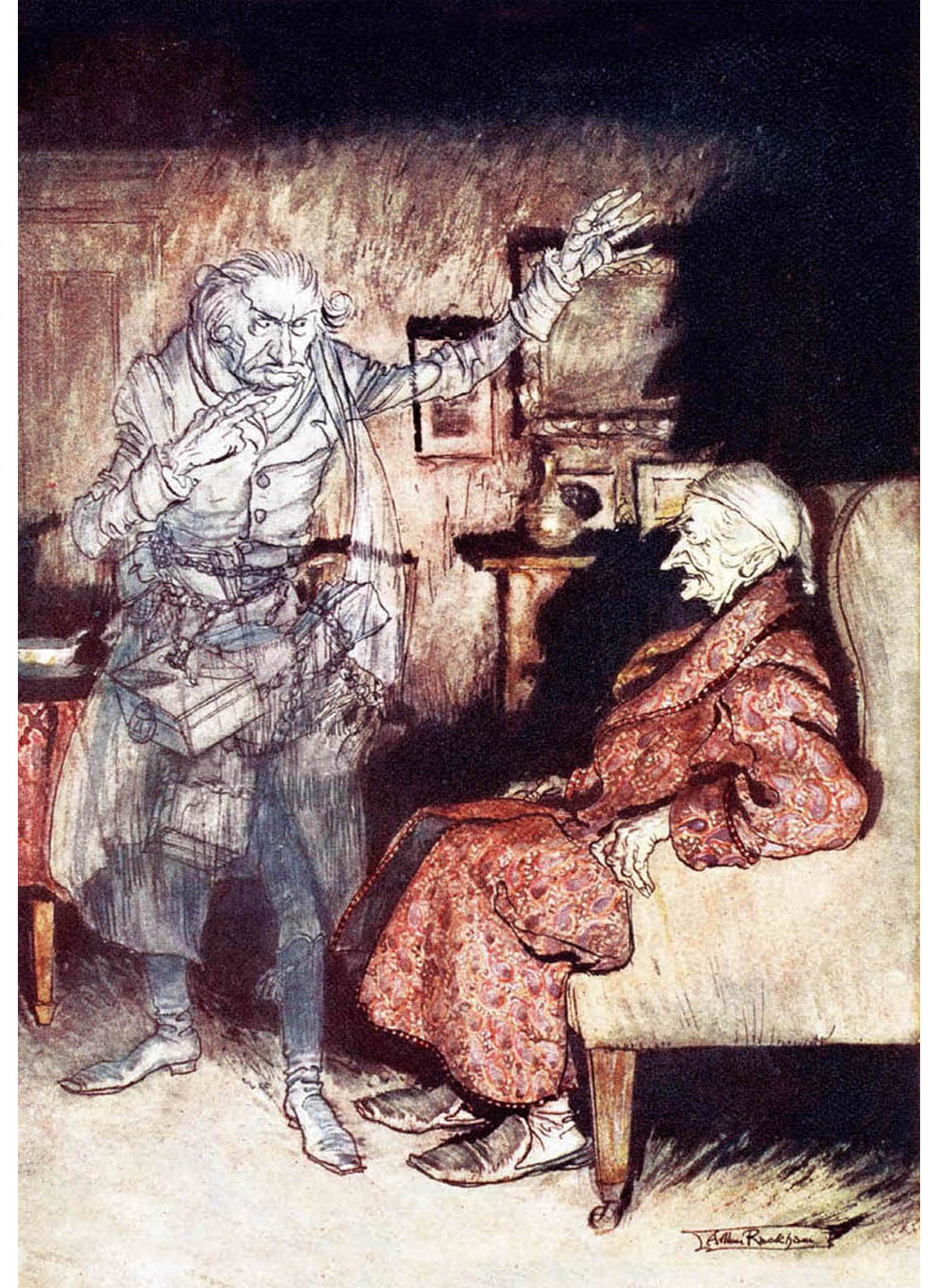
A Christmas Carol, illustration by Arthur Rackham (1915).British Library, London.
It was the Yuletide, that men call Christmas though they know in their hearts it is older than Bethlehem and Babylon, older than Memphis and mankind.
H.P. Lovecraft, The Festival
In his 1925 short story, Lovecraft describes a Yule-rite, older than man and fated to survive him, a vision prompted by a trip to Marblehead, Massachusetts a few years earlier, where he perceived, in a flash all the past of New Englandall the past of Old Englandall the past of Anglo-Saxondom and the Western World. His recent study of folklore combines with this vision in The Festival, describing the survival of some clan of pre-Aryan sorcerers who preserved primitive rites like those of the witch-cult. Lovecraft reports that at the time he had been reading Margaret Murrays The Witch-Cult in Western Europe, and while Murrays theories have since been discounted, the authors intuitions about the holidays connection to witchcraft and an older, darker world are in fact sound. Its an intuition I believe we all share in some measure.
Christmas requires the darkness. Every child understands that its only at midnight the Christmas mystery unfolds. The holiday weve spun from sugarplums and annual TV specials cant exist without those dark edges where imagination blooms. Not by chance it aligns with the long, black night of the solstice and Natures last breath. Skeletal trees or howling winds arent required. Even those whove grown up with the hum of Christmas air-conditioning have felt the uncanny as they await that curious night traveler traversing skies in archaic costume and prophets beard. Come late November, the childs world of consensual reality begins to dissolvemagic elves crouch and spy in suburban homes, still-moist pines are suddenly hauled indoors, and parents whisper and sleepwalk through rituals they cant explain. Tradition lies heavy as if overseen by long-departed ancestors.
In the 20th century, the Krampus has arrived in English-speaking lands like a thing long awaited. This menacing old-world companion to St. Nicholas shocks us with his brutal threats of punishment for naughty children, but somehow, also, he seems inevitable. In a secular society where the craving for the Other is more commonly satisfied through horror and fantasy than the midnight mass, this monstrous character seems custom-made to provide a thrill of holiday awe. It doesnt hurt that he comes from the German-speaking world. Christmas in America, and a lesser extent in the UK, has long shown bias toward the German. Our Christmas tree, Santa Claus, Silent Night, card exchanges, and even the libretto of The Nutcracker are all unashamedly Germanic.
Even the friction between the savage Krampus and our notion of the holiday as cozy domestic idyll is slowly working in the beasts favor. For Americans who came of age in the rebellious punk-rock era, the Krampus now cuts a handsome figure. Somewhat myopically perceived as the anti-Santa, he seems to express the requisite countercultural contempt for the Coca-Cola guzzling, bloated patriarch of all that is consumerist and parental. As Dead Kennedys fans succumb to reproductive urges, hanging up that family Krampus ornament purchased at an alternative craft fair becomes an increasingly important token of a fading rebellion. Slowly, or perhaps more quickly than we expect, the advance guard of American parenting is breaking ground for the Krampus alongside Grandmas visit, the Christmas dinner, and other enduring family traditions.
Before the Krampus, the counterculture had no real figurehead for its holiday revolution. While neo-pagans of the 1960s gleefully dug out Christmas non-Christian roots, for Americans of the punk-rock generation, it was left to the arrival of slasher-Santa movies of the 1970s to really do some violence to the seasonal status quo. Growing out of 1974s Silent Night, Bloody Night and Black Christmas (and the more finely-tuned psychodrama of 1980s Christmas Evil) an entire cinematic genre of holiday horror was born.
What is significant here is the American idea of holiday horror beginning as something subversive, a knife-wielding intrusion from outside attacking the holiday ideal of domestic bliss. In Europe, we now see another tack taken, and the traditional folklore of Christmas has become integral to more recent horror films like Finlands Rare Exports and Hollands Sint (Saint) with their Krampus-like and St. Nicholas-inspired figures coming from within the holiday traditions. The 2010 release date of the two films notably corresponds with the recent international uptick of interest in the traditions discussed in this book.
It is, of course, not the shock of radical new juxtapositions or subversive frisson Europeans experience in the Krampus, as hes been around in one form another since the 18th century. While English-speakers may correctly surmise that the tradition is one of some antiquity and even rather pagan, it comes as a surprise that this fearsome devil is hardly an isolated example of yuletide horrors. The Krampus springs from a deep-rooted European understanding of Christmas as a time of supernatural mayhem.
Literature is perhaps where we English-speakers best intuit the connection of our holiday to the darkness of the dying year. The longer nights are perfect for fireside retellings of what Christopher Marlowe and his contemporaries called winter tales as in his 1595 play The Jew of Malta:
Now I remember those old womens words
Who in my wealth would tell me winters tales
And speak of spirits and ghosts that glide by night.
A couple decades later, Prince Mamillius of Shakespeares The Winters Tale defines the genre: A sad tales best for winter; I have one / Of sprites and goblins.
It was left to the Victorians to revive the holiday horror story as a bona fide tradition. In 1891, British travel-writer and humorist Jerome K. Jerome introduced an anthology of Christmas ghost stories, explaining, Whenever five or six English-speaking people meet round a fire on Christmas Eve, they start telling each other ghost stories. Nothing satisfies us on Christmas Eve but to hear each other tell authentic anecdotes about specters. Henry James even employs the then-common telling of holiday ghost stories as framing device for his 1898 gothic novella Turn of the Screw. But it is Charles Dickens A Christmas Carol that most famously embodies the phenomenon.
Most Americans will be surprised that Dickens tale of chain-dragging, shrouded specters is but one of his efforts in the field. Published in 1837, The Pickwick Papers also notably contains The Story of the Goblins Who Stole a Sexton, in which a mean-spirited gravedigger is dragged underground on Christmas Eve by a goblin. Much like Ebenezer Scrooge, his adventure leaves him a changed man. Also set during the holidays is Dickens 1848s story The Haunted Man and the Ghosts Bargain, A Fancy for Christmas-Time and 1851s The Last Words of the Old Year. Others of his many ghost stories, while not explicitly set during the holidays, were issued in collections marketed as Christmas reading.


